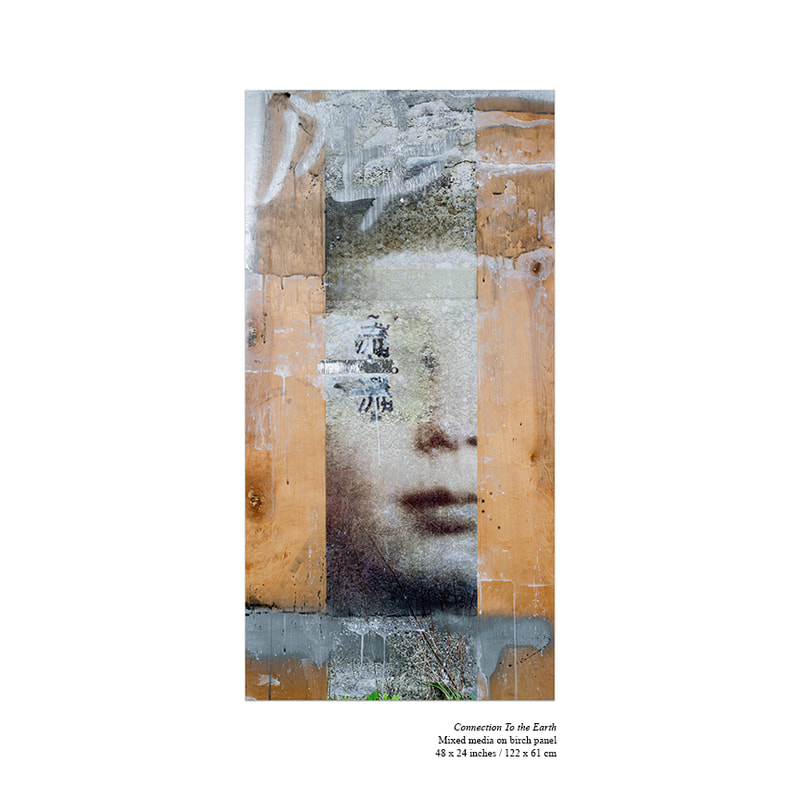Neo Post Factum
Guy-Vincent is an artist who is not defined by the materials, techniques, or even the imagery he employs in his art practice, rather, he is interested in the underlying intellectual and emotional mechanisms by which artworks are perceived and understood, and how they operate in the context of contemporary cultural and artistic discourse. Since his education at the Cleveland Institute of Art (1983) Guy-Vincent has investigated a great variety of modes of expression. An experimentalist by nature, Guy-Vincent has explored traditional media such as paint and canvas, as well as moving images, photography – or rather photographic imagery that is often found, appropriated, and altered – and concept-based, performative endeavors.
In addition, Guy Vincent has worked with sound – both as primary phenomenon and as music, and most recently, Guy-Vincent developed a unique writing system for Twitter consisting of pseudo- or proto-symbolic signs – partly appropriated and partly re-invented characters consisting of glyphs, cyphers, and Unicode elements – 140 character designs he calls Symbol Art, which he uses to investigate the implications of mark-making. In his recent series, Neo Post Factum, Guy-Vincent explores ancestry and family combining two primal elements of human visual communication: the human face, and its relationship to identity. However, the focus is not a personal connection to the people in the photographs, but the question of how images are interpreted both as depictions and as symbols. The images are intended to create filmic non- linear narratives – visual experiences of the past reconfigured, reinterpreted, and re- understood in terms of the present.
These large-scale works on paper and canvas, combine enlargements of family- album- type photographs with other elements including his Symbol Art creating unexpected narratives and raising questions about writing, itʼs evolution, structure, and ability to communicate. The original photos are scanned, manipulated, layered, painted, and drawn upon. This process sometimes appears deliberate and intentional, and at other times ambiguous, even mysterious, prompting a re-examination of the significance of the mark. The question arises: which marks are the result of wear and tear on the source object, which are intentionally contrived, which are hand-drawn or painted, what's been digitally manipulated – and why; but more importantly: how do the marks interact with one-another and the image, and what is the emergent narrative?
Guy-Vincentʼs most recent work is stunning in its scale and presence. It combines many of the artistʼs long-standing interests and utilizes the full range of his native talents. All of the intellectual and technical nuances notwithstanding however, Guy-Vincent amazes with his natural knack for the compelling image. As an artist, Guy-Vincent functions as a unique combination of philosopher, scholar, inventor, virtuoso, magician, and mad scientist. Much can yet be expected of Guy-Vincentʼs art practice, but his greatest work of art so far is the artist himself!
Robert Thurmer, Curator, writer, artist
In addition, Guy Vincent has worked with sound – both as primary phenomenon and as music, and most recently, Guy-Vincent developed a unique writing system for Twitter consisting of pseudo- or proto-symbolic signs – partly appropriated and partly re-invented characters consisting of glyphs, cyphers, and Unicode elements – 140 character designs he calls Symbol Art, which he uses to investigate the implications of mark-making. In his recent series, Neo Post Factum, Guy-Vincent explores ancestry and family combining two primal elements of human visual communication: the human face, and its relationship to identity. However, the focus is not a personal connection to the people in the photographs, but the question of how images are interpreted both as depictions and as symbols. The images are intended to create filmic non- linear narratives – visual experiences of the past reconfigured, reinterpreted, and re- understood in terms of the present.
These large-scale works on paper and canvas, combine enlargements of family- album- type photographs with other elements including his Symbol Art creating unexpected narratives and raising questions about writing, itʼs evolution, structure, and ability to communicate. The original photos are scanned, manipulated, layered, painted, and drawn upon. This process sometimes appears deliberate and intentional, and at other times ambiguous, even mysterious, prompting a re-examination of the significance of the mark. The question arises: which marks are the result of wear and tear on the source object, which are intentionally contrived, which are hand-drawn or painted, what's been digitally manipulated – and why; but more importantly: how do the marks interact with one-another and the image, and what is the emergent narrative?
Guy-Vincentʼs most recent work is stunning in its scale and presence. It combines many of the artistʼs long-standing interests and utilizes the full range of his native talents. All of the intellectual and technical nuances notwithstanding however, Guy-Vincent amazes with his natural knack for the compelling image. As an artist, Guy-Vincent functions as a unique combination of philosopher, scholar, inventor, virtuoso, magician, and mad scientist. Much can yet be expected of Guy-Vincentʼs art practice, but his greatest work of art so far is the artist himself!
Robert Thurmer, Curator, writer, artist

















